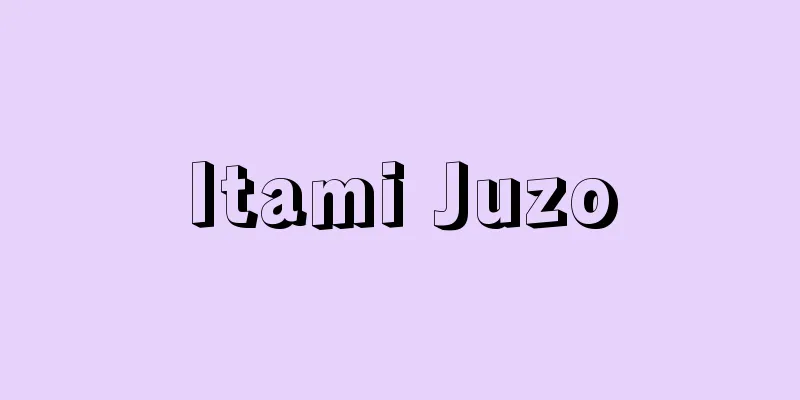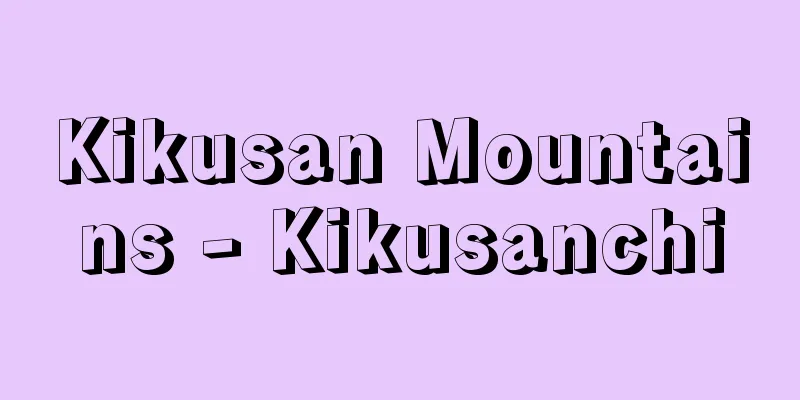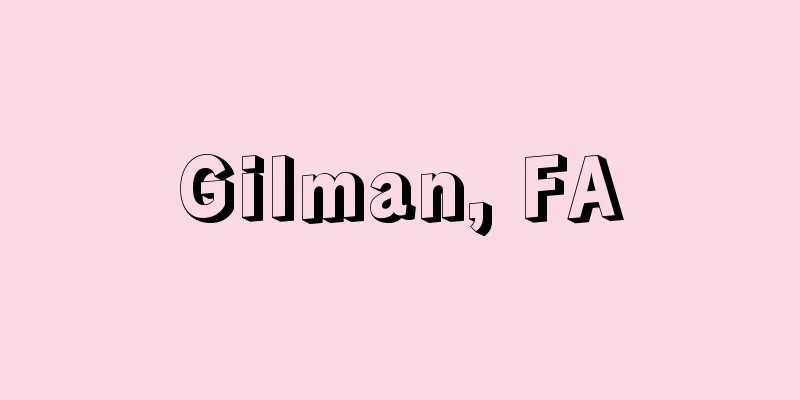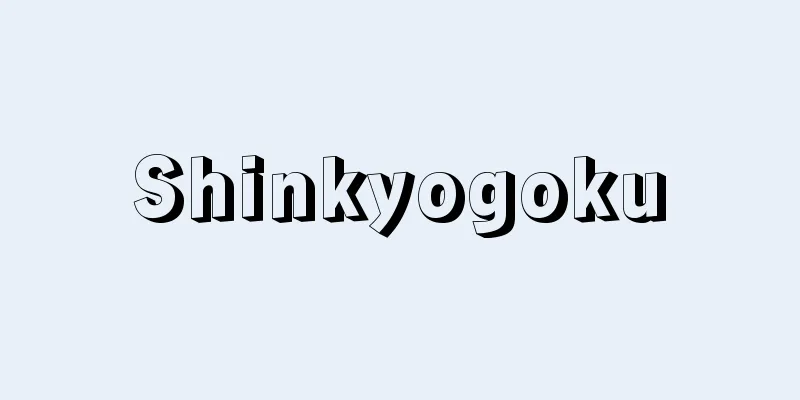Mount Ibuki
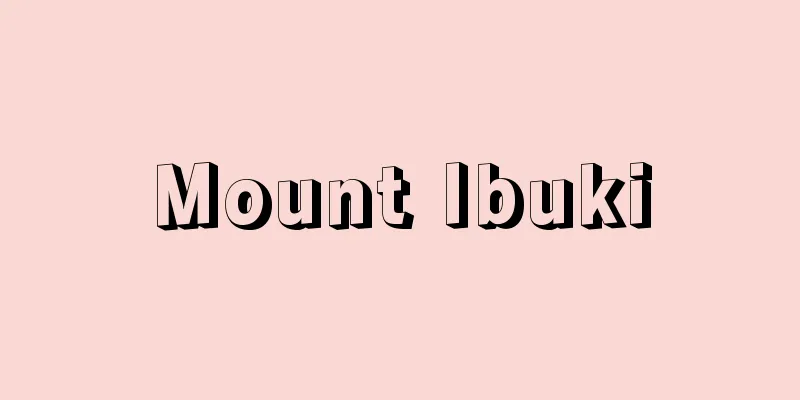
|
A mountain on the border between Maibara City, Shiga Prefecture and Ibigawa Town, Ibi District, Gifu Prefecture. It is also written as Ibukiyama, Ibukisan, Ibukisan, and Ibukisan. It is the main peak of the Ibuki mountain range. It is 1,377 meters above sea level. It is a sacred mountain that has attracted faith since ancient times, and it is said that it was opened as a sacred place of mountain Buddhism by En no Gyoja during the Nara period. In the Heian period, it was counted as one of the Seven High Mountains. In the surrounding area, there are Ibukisan Temple and Ibuki Shrine, which is listed in the Shikinaisha. It has been famous as a utamakura (poem of poetry) since ancient times, and Fujiwara no Sanekata's poem "Kakuto da nie ya wa Ibuki no sashi mo kusa sashi mo shiranai na yuru omo hi wo" (Goshuishū, Ogura Hyakunin Isshu) is well known. There is also a legend about Yamato Takeru no Mikoto. The foot of the mountain is covered with coniferous and broadleaf forests, but above the third station there is grassland with 1700 kinds of plants. Oda Nobunaga is said to have had Portuguese missionaries open a medicinal herb garden. The "sashimo grass" that Sanekata wrote about is also a medicinal herb, and in the Edo period, "Ibuki moxa" was sold at Kashiwabara Inn on the Nakasendo road at the foot of the mountain, and became known nationwide. It is also highly valued academically for its fauna and prehistoric remains, as well as for its flora. It belongs to Lake Biwa Quasi-National Park. There is a bus service from Omi-Nagaoka Station on the JR Tokaido Main Line to the trailhead, and many people visit by using the driveway from Sekigahara to the summit. There are also direct buses from Ogaki Station and Sekigahara Station to the summit. At the summit, there are stone statues of Miroku and Yamato Takeru. There is a cement factory at the foot of the mountain that uses limestone as its raw material, and there are many private lodgings in Ueno on the mountainside. [Seiichi Takahashi] [Reference] | | |View from the Maibara side. Lake Biwa Quasi-National Park. Maibara City, Shiga Prefecture / Ibigawa Town, Ibi District, Gifu Prefecture © Lake Biwa Visitors Bureau, Public Interest Incorporated Association "> Mount Ibuki Source: Shogakukan Encyclopedia Nipponica About Encyclopedia Nipponica Information | Legend |
|
滋賀県米原市(まいばらし)と岐阜県揖斐(いび)郡揖斐川町との境界にある山。膽吹山、伊富貴山、伊服(夫)岐山、夷服岐山などとも書く。伊吹山地の主峰。標高1377メートル。古くから信仰を集めた霊峰で、奈良時代に役行者(えんのぎょうじゃ)によって山岳仏教の聖地として開かれたという。平安時代には七高山の一つに数えられた。周辺に伊吹山寺、式内社伊夫岐神社などがある。古来、歌枕(うたまくら)としても有名で、藤原実方(さねかた)の「かくとだにえやは伊吹のさしも草さしも知らじな燃ゆる思ひを」(『後拾遺集』『小倉百人一首』)はよく知られる。また日本武尊(やまとたけるのみこと)の伝説もある。山麓(さんろく)は針葉樹林や広葉樹林で覆われるが、三合目以上は草地で1700種類もの植物がみられる。織田信長はポルトガルの宣教師に薬草園を開かせたという。実方の詠んだ「さしも草」も薬草で、江戸時代には山麓の中山道(なかせんどう)柏原(かしわばら)宿で「伊吹もぐさ」を売り、全国的に知られた。植物だけでなく動物や先史遺跡など学術上の価値も高い。琵琶湖国定公園(びわここくていこうえん)に属す。JR東海道本線近江(おうみ)長岡駅から登山口までバスが通じ、また関ヶ原から山頂までのドライブウェーを利用して訪れる人は多い。大垣駅、関ヶ原駅から山頂までの直行バスも運行している。山頂部にはみろく石像、日本武尊石像がある。山麓には石灰岩を原料とするセメント工場があり、中腹の上野には民宿が多い。 [高橋誠一] [参照項目] | | |米原市側からの眺望。琵琶湖国定公園域。滋賀県米原市/岐阜県揖斐郡揖斐川町©公益社団法人びわこビジターズビューロー"> 伊吹山 出典 小学館 日本大百科全書(ニッポニカ)日本大百科全書(ニッポニカ)について 情報 | 凡例 |
<<: Yi-fu-jiu (English spelling)
Recommend
maniera
Manierismo is a term derived from the Italian wor...
Acetylcholine - Acetylcholine
A basic substance CH 3 COOCH 2 CH 2 N + (CH 3 ) 3...
Lampyridae
…A general term for insects in the order Coleopte...
Arsenous acid (arsenic acid)
An acid thought to exist when diarsenic trioxide A...
Edo Village Kagura
...It can also refer specifically to shrine maide...
breast cancer
Definition/Concept The mammary gland is a type of ...
Kitakinuma
…It is also called Sugenuma. It is a dammed lake ...
Ka-row irregular conjugation - Kagyouhenkakukatsuyo
One of the conjugation forms of verbs. The word fo...
Saisei Gakusha - Saisei Gakusha
A representative private medical school of the Me...
Antialis Africana - Antialis Africana
...Strong fibers are obtained from the inner bark...
Risk Insurance
This refers to the natural insurance premium (one-...
Explosive powder
Explosive substances that can effectively utilize...
Stove - sutobu (English spelling) stove
This refers to equipment that heats a room by rad...
Scottish school of common sense
…Formally known as the Scottish school of common ...
pollucite
...The following minerals are called rare element...

